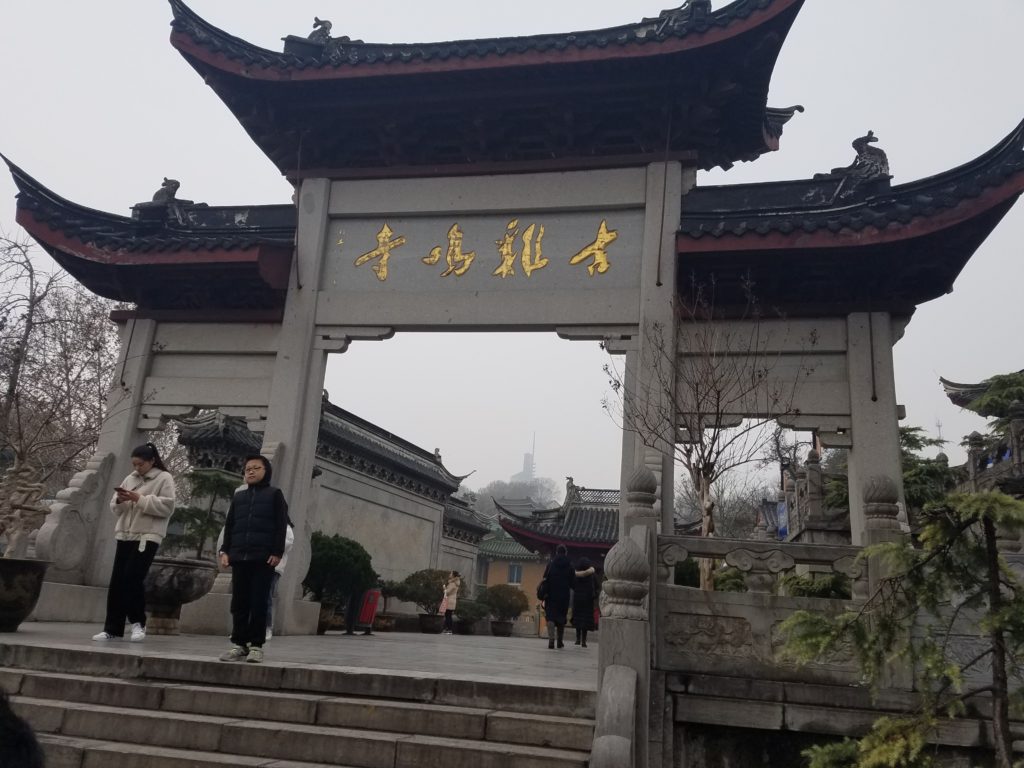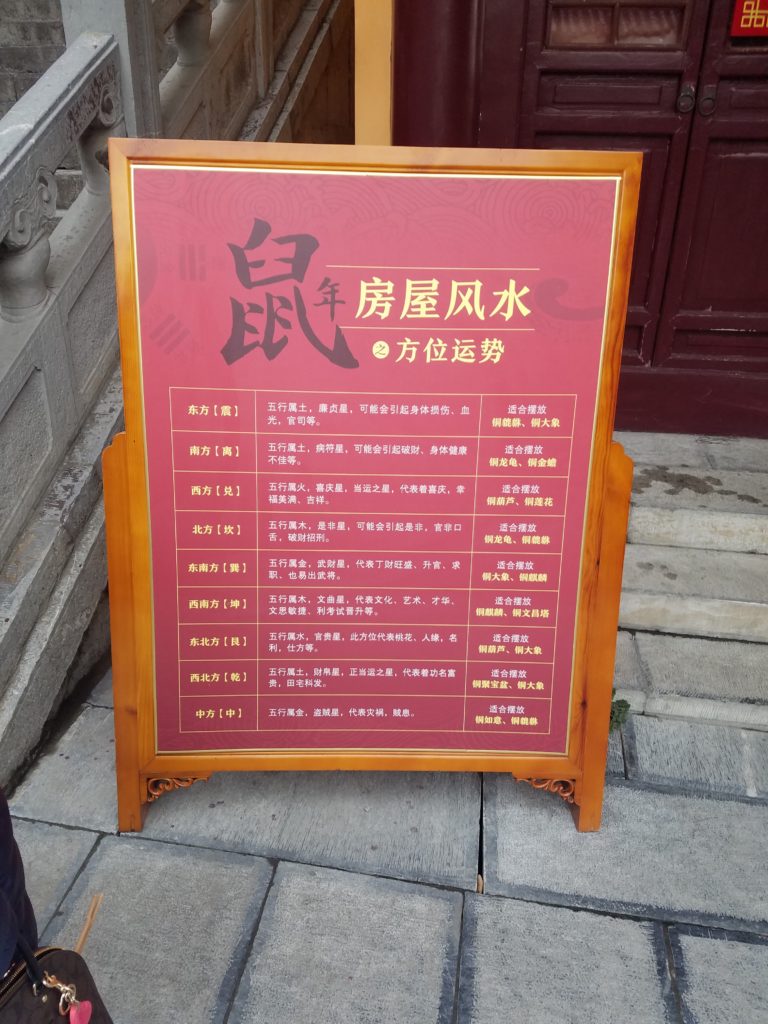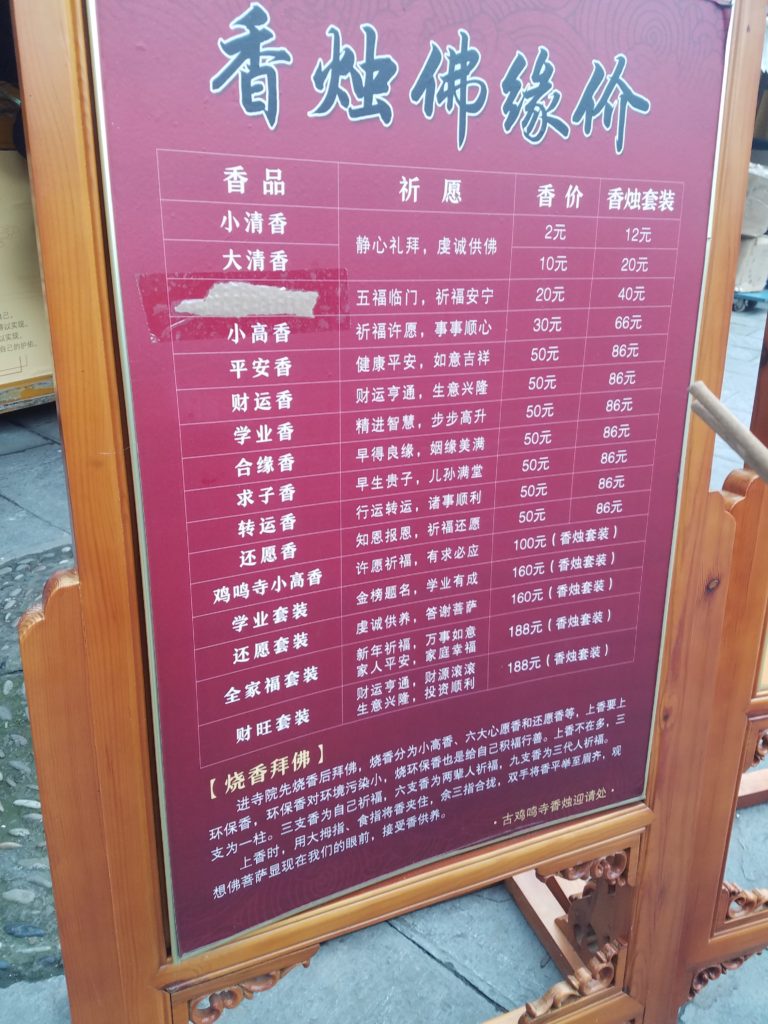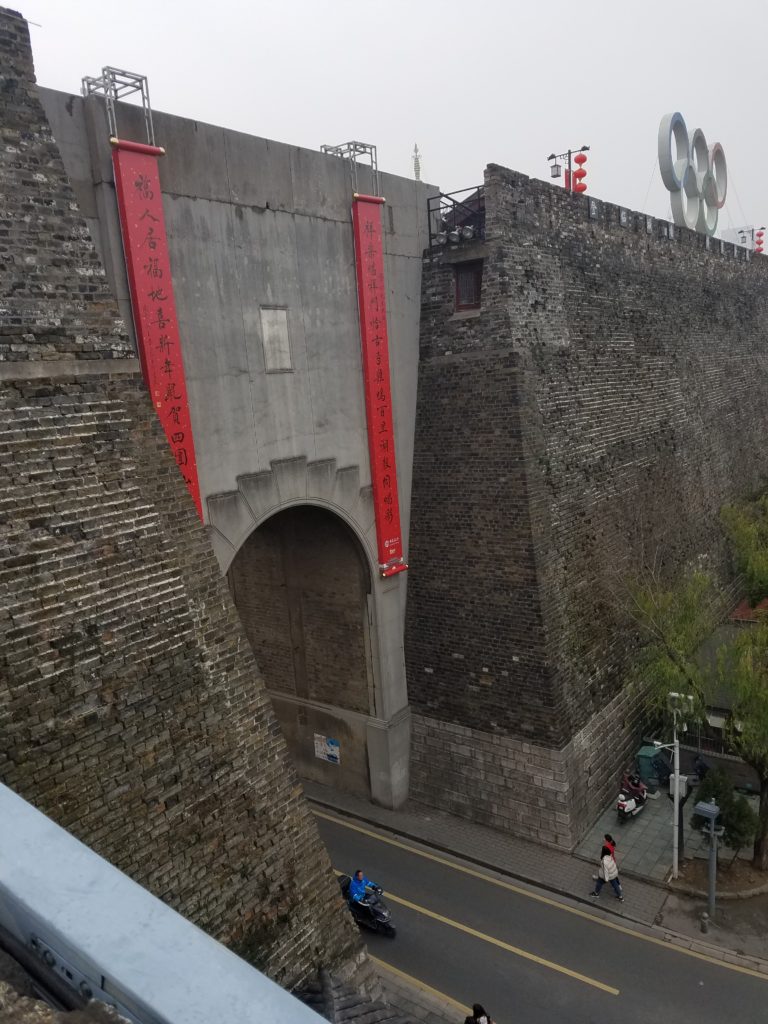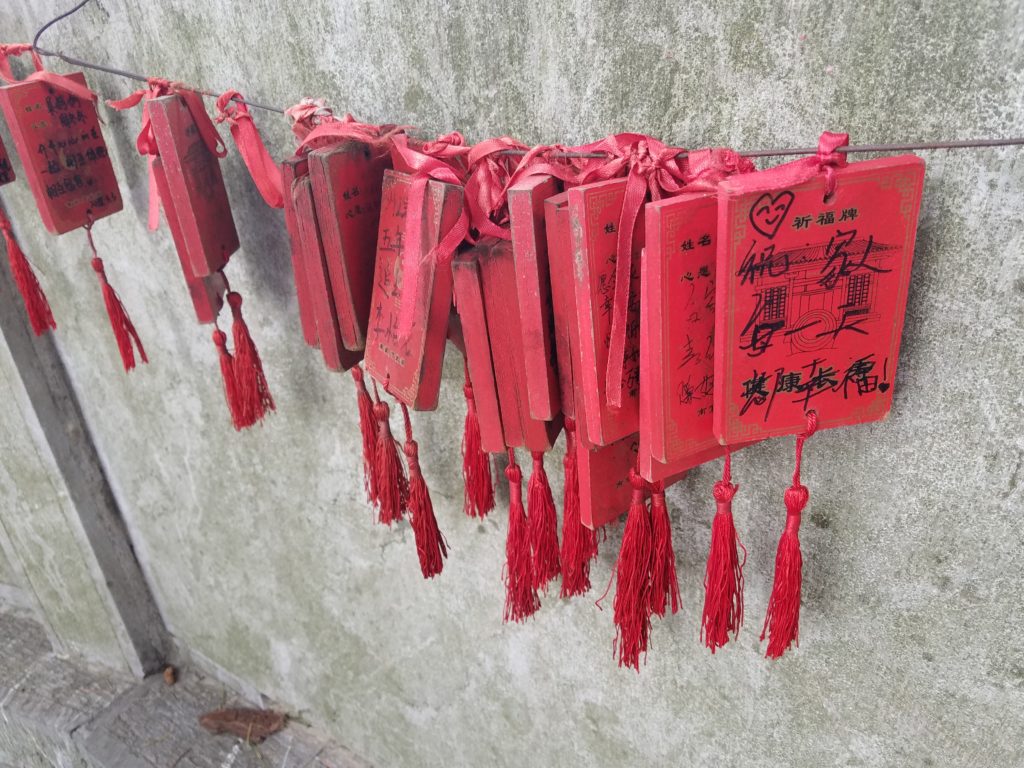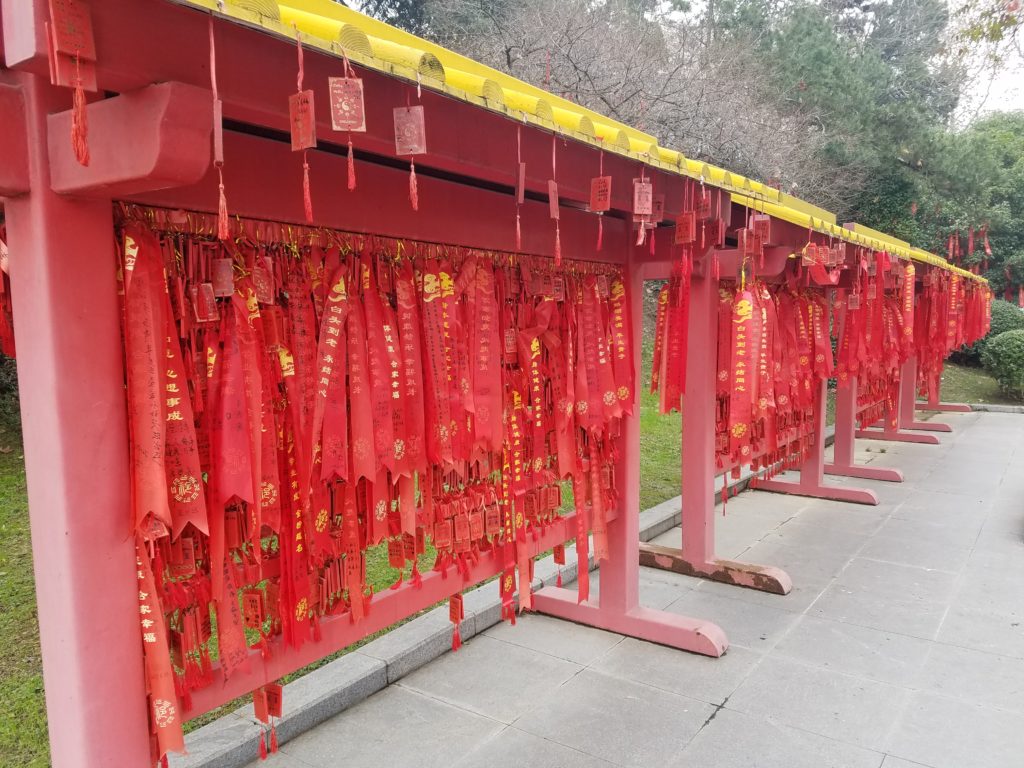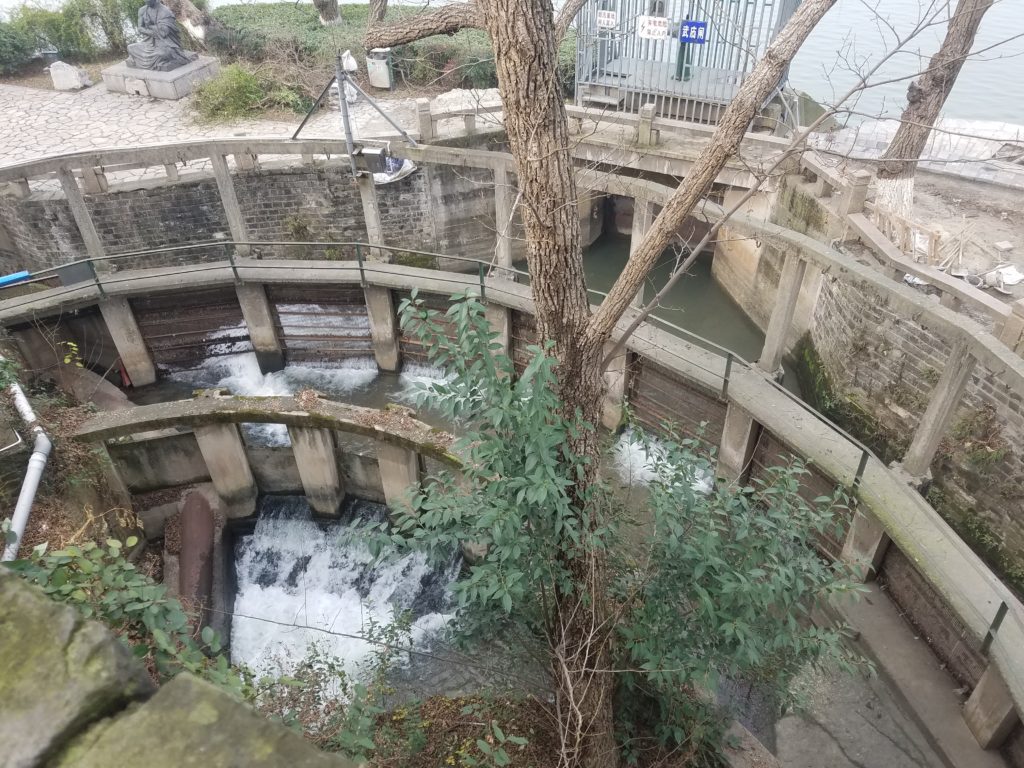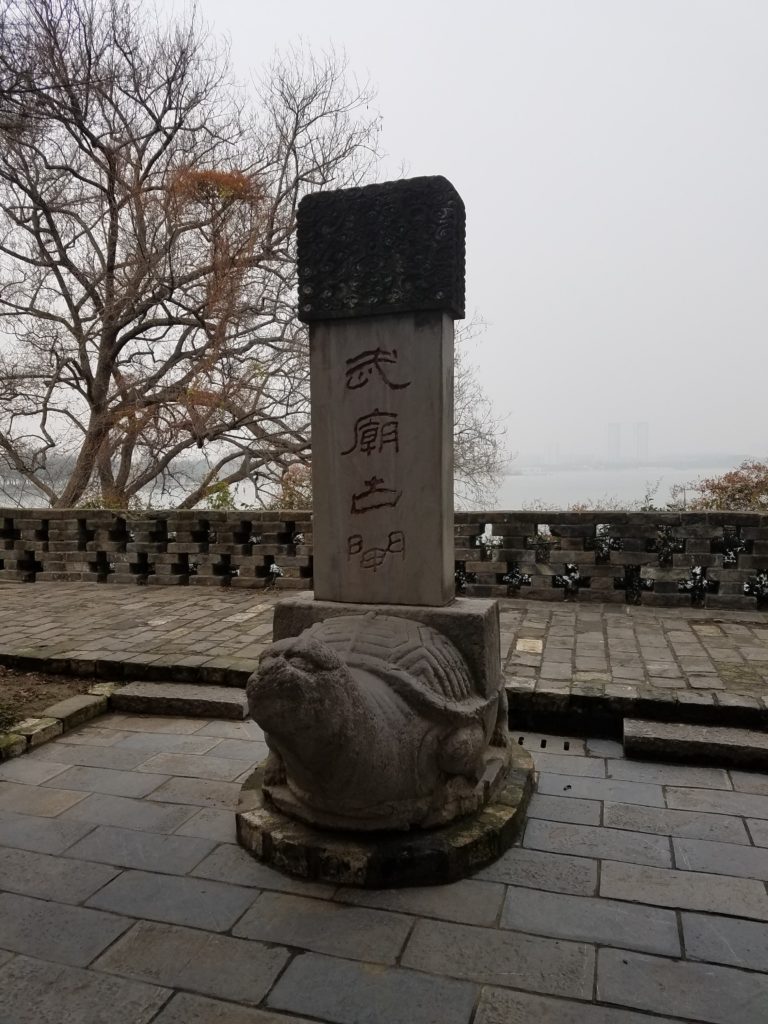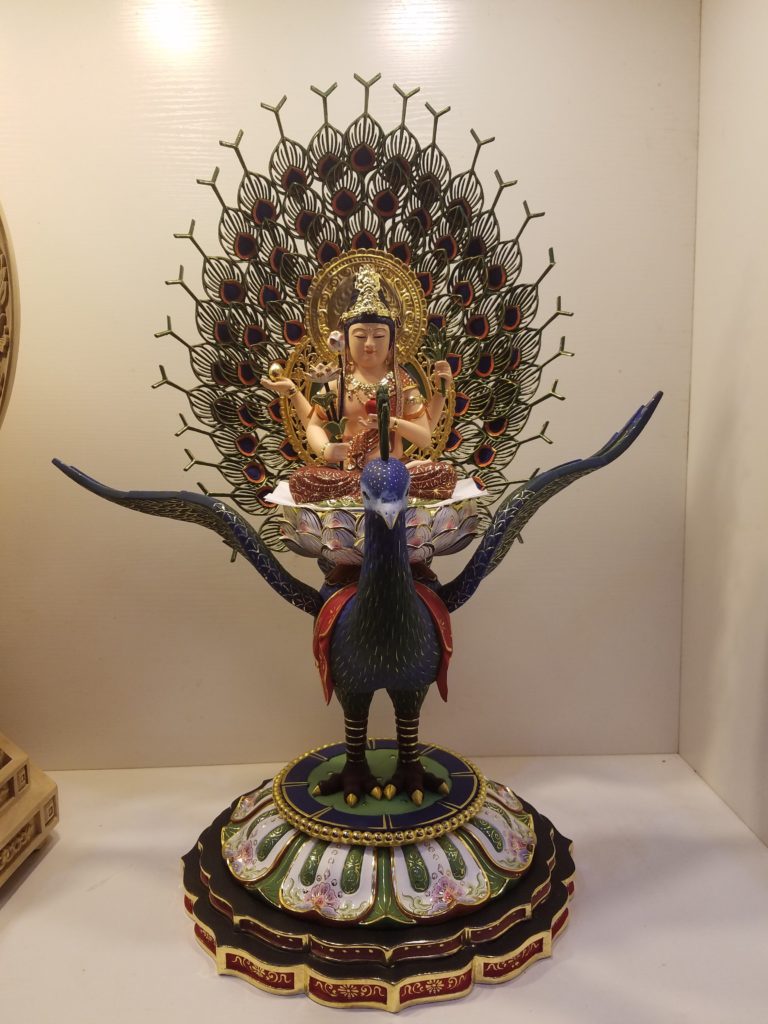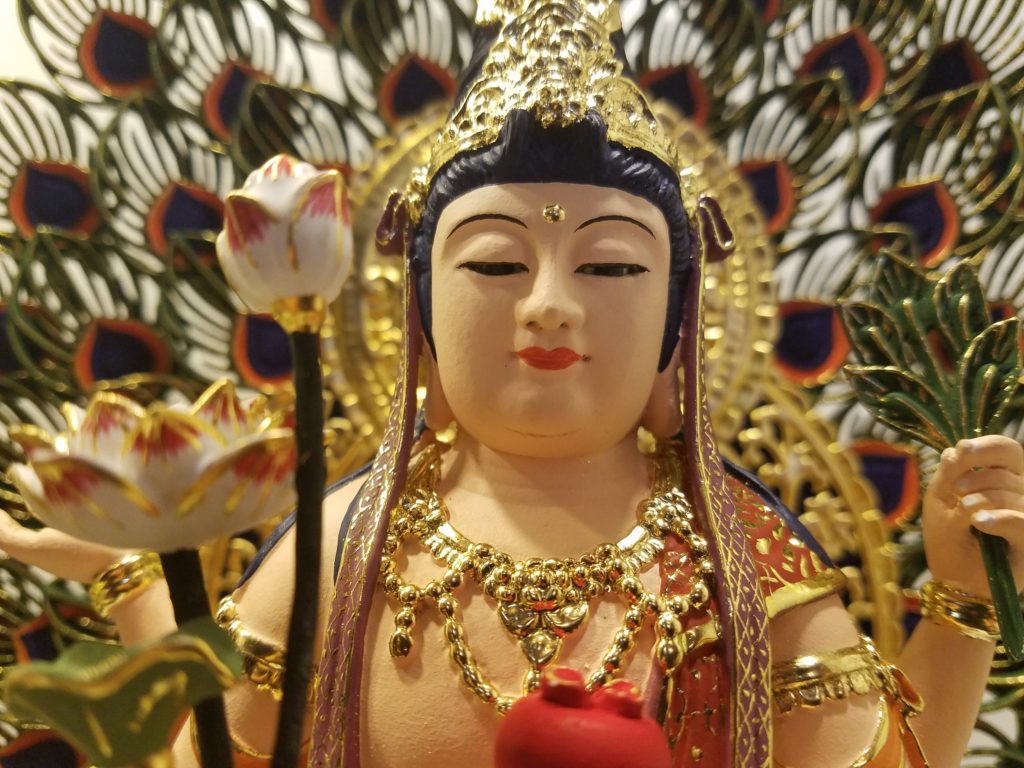A visiting group from another part of China came to stay at Tianlong Temple today, and they were planning on seeing a few other local temples while they were in the city, so I got to tag along.
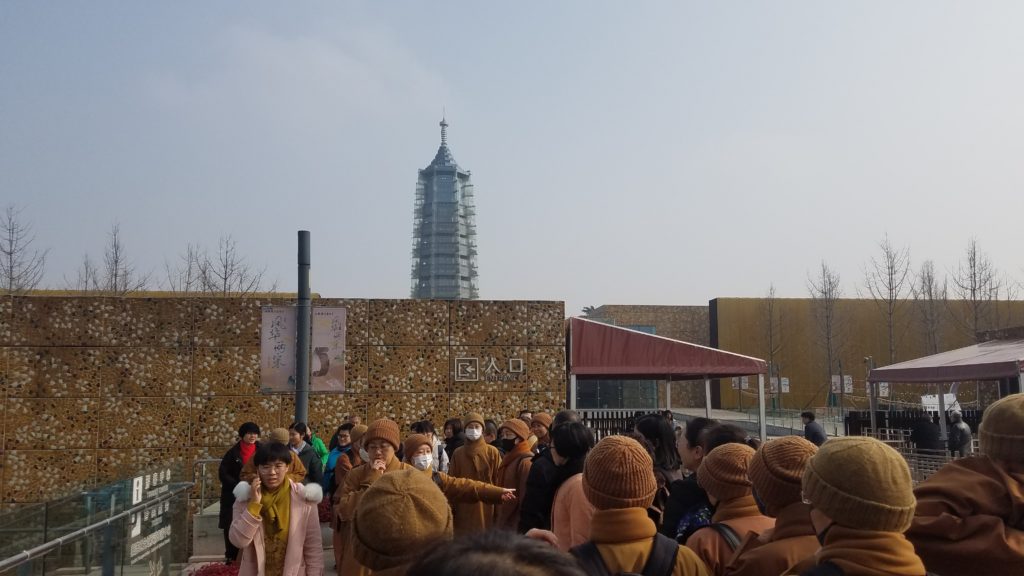
Our first trip was to Dabaoen Temple (I believe the official translation is Grand Baoen Temple, but I find it weird to translate part and then transliterate the rest). Despite being founded in the third century, it went through a few periods of construction, destruction, and then reconstruction. Its most recent iteration was in the Ming dynasty, when the emperor built it to memorialize his parents. Unfortunately, it was burned down during the Taiping Rebellion a few centuries later.
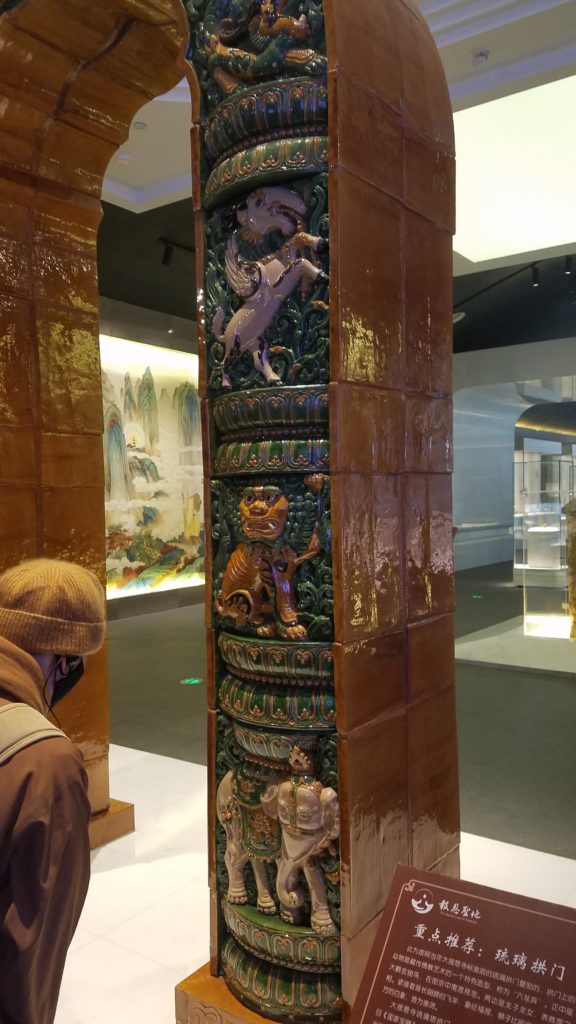
This next part is hearsay, but apparently there were originally plans to build some commercial center, except once they started digging, they found the ruins of the temple and were ordered to stop. The government took over the area and built an enormous structure around it to protect the ruins from the elements, and then started digging—eventually finding hidden treasures untouched by the Taiping Rebellion.
Being an imperially sponsored temple, it’s almost a given that the temple must have housed quite a few treasures. Of these, the most significant one is a finely-crafted gold pagoda encrusted with jewels. While there were supposedly a lot of fine murals and paintings, those have all disappeared, although there are attempts in the exhibitions to reimagine what they might have looked like.

The pagoda housed a relic—although it was unclear what the relic was. They had it on an altar and gave it a fancy name of 感應舍利, which literally means “the relic of invoked-response.” This tells me nothing about the particulars of the relic and its origins. After some Googling, I found out that these relics aren’t relics in the usual Buddhist sense. They’re not remains of some holy figure, but rather jewels the emperor commissioned to serve as relics.
In this sense, I don’t see anything holy about them.
Sure, they’re beautiful crystals, and the case enshrining them is a masterpiece, but there is no religious significance to me. If anything, the entire space—which is beautifully imagined—is not much more than an attempt to help visitors conceptualize Buddhist scenes and what this temple might have looked like four hundred years ago.

They had similar models for other local monasteries as well.
Despite this though, there was an egregious attempt to make the space around the relics a “temple” in the sense that there was an altar (which is fine). What made me frown was a desk where visitors could make donations—except the donations aren’t going to support the monastery because there is no monastery. I suppose the argument is that the money supports the museum, and while I’m fine with this, I think it’s confusing to have it masquerading as a temple donation station.
From a Buddhist perspective, supporting an active community of monastics is very different from supporting a museum. While they’re both great causes, it’s misleading to suggest that the donations are going towards supporting a Buddhist community—or to provide maintenance for the relics which aren’t really relics.
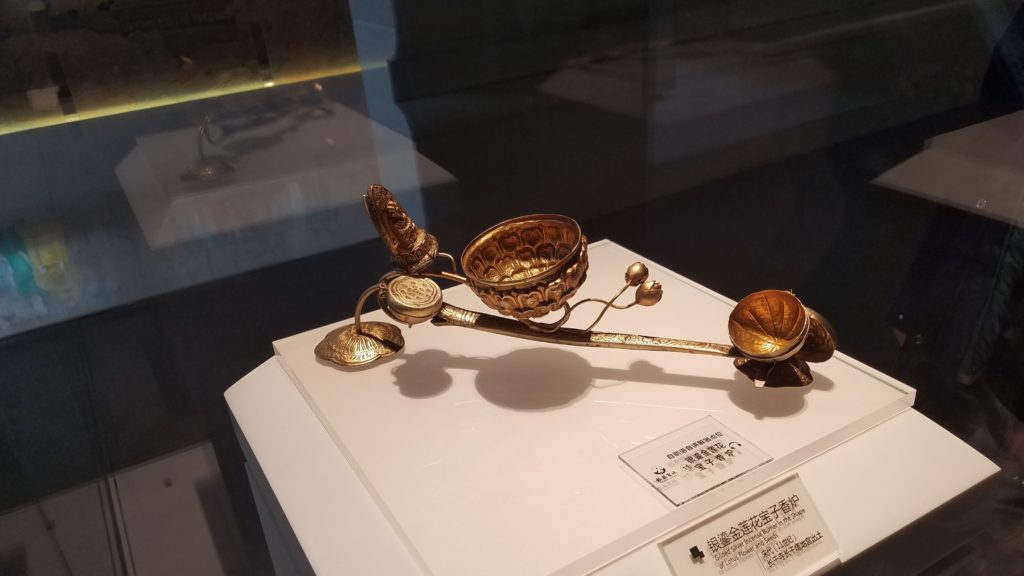
Overall, I was extremely pleased with the conservation work and the items in the exhibit. The newly built scenes were nice too, and I did learn a lot from the tour.

Oh, this leads me into the tour.
So, having been a docent for quite a few institutions now, our docent today definitely knew her stuff (although part of me felt like she had simply memorized a script without having a particularly deep understanding of what she was describing). Still, being able to smoothly remember details about each exhibition and explain them to a group of twenty-some people is no small feat.
Now—an issue arose in terms of visitor experience. At the beginning of the tour, she instructed me to be in charge of returning the earpieces at the end of our tour.
Sure, that’s fine.
Then, halfway through the tour, she confirmed with me that I would help her collect earpieces at the end of the tour.
“Yup,” I replied. “I’ll help you collect the earpieces.”
“Then why are you still here?” she jabbed.
I was confused, “Why shouldn’t I be here?”
“I handed out 22 earpieces, and there are only 17 people here right now. How are you going to return the earpieces to me if people are missing?”
“Chill. The tour isn’t over yet.”
She gave me an exasperated sigh and kept moving.
A few minutes later, she pulled me aside again.
“I’m serious kid, if I don’t get 22 of these back, you’re going to pay for the missing ones.”
I looked her dead in the eye, “I’ll let you know right now that I don’t have money, and I’m not responsible for what other adults do during the tour. But, if it makes you feel better, I can assure you we’ll have all 22 back to you by the end of the day.”
While I wasn’t too bothered by the exchange, it did make the entire experience less pleasant than before the snappy attitude.
We kept moving, and I thought to myself, I have no idea who these people are. I’m just going to help her collect them—what else does she expect of me?
Like I said, at the end of the tour, I rounded people up and had them return their earpieces before letting them leave. She counted 20. We were missing two earpieces.
“I told you we’d be missing earpieces,” she glared at me. “Now pay for them.”
“Could you count them again?” I asked.
We went inside to count them on a table—21.
“We’re still missing one,” she insisted. “They’re 500 rmb each. I’m serious. You need to pay before you can leave.”
“I’m not the one who didn’t return my machine. I’m not responsible for other adults on this tour—I don’t even know them,” I explained.
Her coworker came up to us, “What’s the matter?”
My docent explained the situation.
“You’re fine,” the coworker said to me. “Please take some time to enjoy the rest of the exhibitions.”
“Why are you letting him go?” my docent lashed back. “Doesn’t he need to pay us first?”
We both stared at her blankly.
“… Is he Mr. Wang?” the coworker asked.
“No,” I answered quickly. “I’m just a tag-along.”
“Then he’s not responsible,” she said firmly. “I’m sure it’ll show up soon. Somebody probably just took it with them to the restroom or something.”
“You better find it and bring it to me, young man,” my docent’s voice was getting fainter as I stepped out the door and towards the other exhibits. “I’ll charge you!”
I laughed when I got outside. She never told me where to bring the earpiece, so even if I did find it, I wouldn’t know where to find her. Besides, I only had 100 rmb on me. If they really wanted to charge someone, they’d charge Mr. Wang, the tour coordinator.
But, I decided that I’d make an announcement once we got on the bus to make sure everybody had returned their earpieces—they did cost 500 rmb a piece, after all.
I browsed around a bit more, looking around at the exhibitions and gift shop before deciding that I was thoroughly unimpressed by their overpriced merchandise. Alas, such is the case for most gift shops anywhere.

When everybody gathered together to get on the bus, I checked, and all machines were returned. We were good to go.
Although, honestly if I had found a machine then and there, I wouldn’t have had any means of giving it back to the docent.
